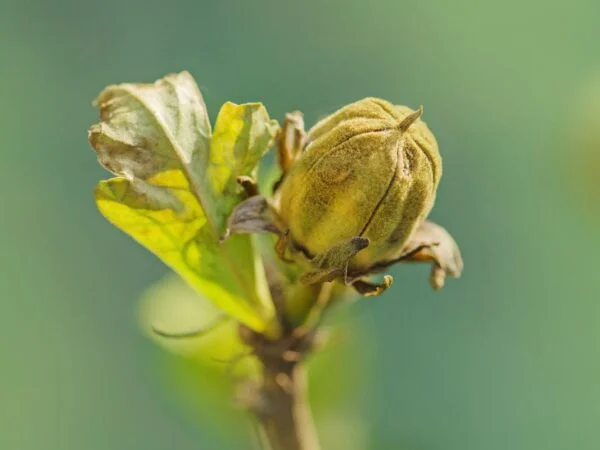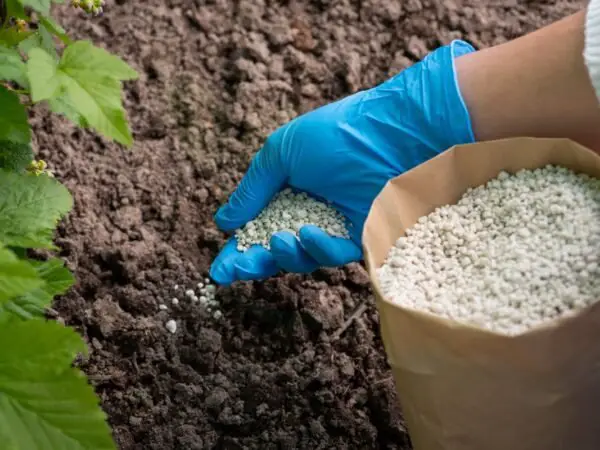Are you wondering how to care for a hibiscus in the winter cold weather? In this guide, we will provide you with expert tips and tricks to ensure your hibiscus thrives during the colder months and harsh weather.
Wondering when to bring your hibiscus indoors in cold weather or how often to water it in winter? Stay tuned as we delve into specific care instructions tailored to help your hibiscus survive and even flourish through the chilliest season with cold weather, cold nights, and freeze water. With our comprehensive advice, you can confidently navigate the cold weather of the winter months while helping to water your hibiscus, keeping it healthy and vibrant.
Curious to learn more about optimizing hibiscus care in winter weather? Keep reading for valuable insights and practical strategies that will equip you with the knowledge needed to maintain your plant's well-being.
Key Takeaways
-
Understand the specific care needs of hibiscus plants during the winter season to ensure their health and survival, including water, protection, temperature, and warmth.
-
Prepare your hibiscus for winter by gradually reducing watering and adjusting its location to promote dormancy.
-
Consider fertilizing your hibiscus in winter with a balanced formula to support its nutrient requirements during the dormant period, water and temperature.
-
Explore overwintering strategies such as bringing potted hibiscus indoors or providing insulation for outdoor plants in colder climates.
-
Protect your hibiscus from freezes by covering them with blankets or moving them to a sheltered area when temperatures drop significantly.
-
Implement indoor care practices for hibiscus, including adequate sunlight, controlled temperatures, and regular monitoring of moisture levels.
Understanding Hibiscus Winter Care
Dormancy Signs
Observing the loss of color in hibiscus leaves signals the onset of dormancy. Keep an eye out for dropping flowers during the winter months as the temperature drops. Pay attention to the cessation of new growth as a clear indicator that the plant is entering dormancy.
Dead vs Dormant
Differentiate between dead and dormant hibiscus by checking for signs of life such as buds forming. Understand that dormancy is natural for perennial Hibiscus during winter. Yellowing leaves are a common occurrence when transitioning to dormancy.
Watering Needs
Adjust watering frequency based on the dryness of the topsoil to prevent overwatering. Be cautious in winter to avoid root drowning due to lower evaporation rates. Remember that the plant requires less frequent watering in winter.
Indoor Temperature
Maintain a consistent indoor temperature suitable for your hibiscus plant's dormancy period. Avoid sudden temperature fluctuations that can shock the plant's system. Ensure that the indoor temperature remains stable throughout the winter months.
Preparing Hibiscus for Winter
Shifting to Pots
Pot Selection
-
Choose a spacious pot with good drainage for your hibiscus plant.
-
Opt for a pot that allows room for root growth, ensuring the plant's stability.
-
Consider using a pot with insulation properties to protect the roots during winter.
Soil Type
-
Select acidic potting mix when transplanting your hibiscus to ensure optimal growth.
-
Ensure the soil provides essential nutrients required during the winter season.
-
Use well-draining soil to prevent water accumulation that can harm the plant.
Pruning Techniques
-
Prune dead or damaged branches before winter arrives to maintain plant health.
-
Trim back leggy growth to encourage new and vigorous growth in the upcoming spring.
-
Avoid heavy pruning in winter as it can stress the plant, impacting its resilience.
Hygiene Maintenance
-
Clean and inspect your hibiscus plant thoroughly before bringing it indoors for winter.
-
Wipe down leaves carefully to eliminate dust and potential pests residing on them.
-
Maintain a clean environment around the plant to minimize disease transmission risks.
Fertilizing in Winter
Fertilizer Types
Select a balanced fertilizer suitable for hibiscus plants to ensure proper growth. Slow-release fertilizers are beneficial as they provide nutrients gradually, supporting the plant's health. Opting for organic fertilizers can further enhance the plant's health during dormancy.
Fertilizing Schedule
Adjust the fertilizing schedule based on the hibiscus plant's dormancy period. During winter, reduce or halt fertilizing to support the plant's dormant phase. Once spring arrives, resume fertilizing to stimulate new growth and blooming.
Overwintering Strategies
Cold Climates
In cold climates, it's crucial to provide additional insulation for hibiscus plants during winter. This can involve mulching around the base of the plant to protect its roots from freezing temperatures. Moving potted hibiscus plants indoors is also a smart move to shield them from frost damage.
Monitor temperature changes regularly to adjust care practices accordingly. If there's a sudden drop in temperature, consider covering outdoor plants with frost cloth or bringing them inside temporarily. By staying vigilant, you can ensure your hibiscus survives the winter intact.
Warmer Climates
In warmer climates, caring for hibiscus plants during winter requires a different approach. To prevent overheating, make sure to provide adequate shading for your plants. This can be achieved by placing them in spots that receive partial sunlight rather than direct exposure.
To combat the risk of drying out, water your hibiscus more frequently in warmer climates. The increased heat and sun exposure can lead to faster evaporation, so keeping the soil consistently moist is essential for the plant's well-being. Remember, a hydrated hibiscus is a happy hibiscus.
Protecting from Freezes
Insulation Methods
Using winter mulch such as compost or pine straw can effectively insulate hibiscus roots from freezing temperatures. This layer of insulation helps maintain a stable temperature for the roots, protecting them from frost damage. Consider wrapping outdoor plants with burlap for an additional layer of protection against the cold. This physical barrier can shield the plant from harsh winds and extreme temperatures during winter. Install frost cloth or covers over your hibiscus plants to provide a protective shield against freezing conditions. These materials act as barriers, preventing direct exposure to ice and frost, safeguarding the plants' delicate structures.
Emergency Care
Act promptly if your hibiscus displays signs of distress during winter, such as wilting leaves or discoloration. Provide immediate shelter by moving potted hibiscus indoors or covering outdoor plants with protective materials if temperatures suddenly drop significantly. Quick action can help prevent further damage and promote recovery. If unsure about emergency care measures for your hibiscus in winter, seek professional advice from local garden centers or plant specialists. Their expertise can guide you on the best course of action to ensure your hibiscus survives the cold season intact.
Indoor Hibiscus Care
Lighting Needs
Hibiscus plants require ample sunlight even in winter to thrive indoors. Position them strategically near windows to maximize exposure. Consider using supplemental lighting for plants lacking natural light.
To ensure your indoor hibiscus thrives during the colder months, it's crucial to maintain adequate humidity levels. Utilize a humidifier or create a pebble tray around the plant to increase moisture. Avoid placing the plant near sources of dry air like heaters.
Monitoring Plant Health
Pest Management
Inspect your hibiscus plants regularly for common pests such as aphids or spider mites. These pests can quickly damage the plant if left unchecked. Utilize natural remedies like neem oil, which is effective in controlling pest infestations without harming the plant. If you notice any affected plants, promptly quarantine them to prevent the spread of pests to other healthy plants.
Disease Prevention
To prevent fungal diseases during winter, avoid overwatering your hibiscus plants. Excess moisture can lead to mold and mildew growth, which are common issues in colder seasons. Keep a close eye on your plants for any signs of mold or mildew, such as discolored spots or fuzzy growth. Ensure that your hibiscus is planted in well-draining soil and provide adequate ventilation to reduce the risks of disease development.
Encouraging Dormancy
Temperature Adjustments
Adjust indoor temperatures gradually to acclimate hibiscus plants. Sudden changes can stress the plant, impacting its health. Monitor fluctuations closely to maintain optimal conditions.
Light Reduction
Reduce light exposure for hibiscus plants entering dormancy. Gradually decrease light levels to mimic natural changes. Utilize curtains or shades to manage light exposure effectively indoors.
Reviving After Winter
Gradual Reintroduction
Gradually reintroduce hibiscus plants to outdoor conditions in spring. Start with short periods of outdoor exposure to prevent shock. Increase outdoor time gradually to allow plants to readjust.
Spring Care Tips
Resume regular watering and fertilizing schedules in spring. Prune dead or damaged branches to encourage new growth. Transition plants back outdoors gradually to prevent stress.
Final Remarks
Caring for your hibiscus during the winter months is vital to ensure its health and vibrancy come spring. From preparing your plant for the cold season to monitoring its well-being, you've learned the essential steps to nurture your hibiscus through the winter. By following these strategies diligently, you can protect your plant from freezing temperatures and encourage healthy growth post-winter dormancy.
As you gear up to implement these winter care practices for your hibiscus, remember that consistency is key. Regular monitoring, proper fertilization, and strategic overwintering are crucial for a successful winter care routine. Your diligence now will pay off when you witness your hibiscus thriving in the warmer months ahead. Ensure you stay committed to these practices to enjoy a flourishing hibiscus garden year after year.
Frequently Asked Questions
How do I prepare my hibiscus for winter?
To prepare your hibiscus for winter:
-
Trim back the plant
-
Move it indoors or to a sheltered area
-
Reduce watering frequency
-
Inspect for pests and diseases
Can I fertilize my hibiscus in winter?
Avoid fertilizing your hibiscus in winter. The plant is dormant during this time and does not require additional nutrients. Resume fertilization in spring when the plant starts actively growing again.
What are some overwintering strategies for hibiscus?
Overwintering strategies include:
-
Bringing the plant indoors
-
Providing adequate sunlight
-
Maintaining proper humidity levels
-
Avoiding drafts and temperature extremes
How can I protect my hibiscus from freezes during winter?
Protect your hibiscus from freezes by:
-
Covering it with frost cloth or blankets
-
Moving potted plants indoors
-
Using mulch around the base of outdoor plants
-
Placing a heat source nearby, if possible
Should I adjust my care routine for indoor hibiscus during winter?
Yes, adjust your care routine for indoor hibiscus in winter by:
-
Providing sufficient light
-
Monitoring humidity levels
-
Watering sparingly to prevent root rot
-
Ensuring proper air circulation
Image Source: Paid image from CANVA




